Medical news October 17: Improving health care for women
Women make up a large part of the workforce in society. Therefore, women's health care is not only a personal matter but also a decisive factor in the development of society.
Women's health needs community attention
Women’s health care is not only a personal matter but also a decisive factor in the development of society, contributing to creating a better future for everyone. Good health helps women participate more actively in social, family and work activities.
 |
| Women make up a large part of the workforce in society. Therefore, women's health care is not only a personal matter but also a decisive factor in the development of society. |
When women are healthy, they are better able to nurture and care for their families, thereby creating a healthy living environment for the next generation.
Women make up a large part of the workforce, and good health helps them be more productive. Taking care of women's health not only benefits individuals, but also improves productivity and economic efficiency for society as a whole.
Taking care of women's health, especially during sensitive periods such as pregnancy, childbirth, and menopause, helps reduce the risk of serious illnesses.
This not only saves on medical costs but also reduces pressure on the health system. Women's health care is an important part of promoting gender equality.
When women have access to health services, they can make decisions about their own health and that of their families, thereby enhancing their status in society. A society where women receive good health care leads to more sustainable development.
Women's health affects the health of children and families, thereby creating a healthier and more prosperous community.
Improving women's health care, especially for women of menopausal age, is becoming an urgent issue as the number of women affected by hormonal decline is increasing.
The period not only causes physical and mental changes, but also carries many potential health risks such as osteoporosis, cardiovascular disease and reduced quality of life. Therefore, focusing on prevention, management and early treatment is the key factor to help women maintain better health and quality of life.
At the workshop "Responding to World Menopause Day 2024: Menopausal Hormone Therapy", Mr. Dinh Anh Tuan, Director of the Department of Maternal and Child Health, said that Vietnam has about 100 million people, including 13 million women of this age.
If we include those who begin to enter the stage of hormonal decline (after 35 years old), this number increases to about 20 million, accounting for 1/5 of the population.
Mr. Tuan emphasized that hormonal decline is a natural physiological process, but its consequences can become pathological problems, especially the risk of osteoporosis, cardiovascular disease and bone and joint problems in premenopausal and menopausal women.
Mr. Tuan recommends that women should not only treat symptoms but should proactively prevent them early by improving their lifestyle, exercise, diet, and supplementing micronutrients and hormones from plant sources.
If you encounter any unusual problems, you should seek medical advice and timely treatment. Currently, the Ministry of Health is developing national guidelines on health care for premenopausal and menopausal women, and is training human resources and implementing menopause consultation clinics at obstetrics and gynecology hospitals.
The burden of breast cancer
Vietnam records about 24,600 new cases of breast cancer and 10,000 deaths each year, accounting for 1/3 of all cancer cases in women. Although breast cancer is a disease that can be cured if detected early and treated promptly, there are still many women who have not proactively gone for screening.
The age of breast cancer is getting younger and younger, creating a big challenge for both patients and the health system.
Breast cancer is the most common cancer in women not only in the world but also in Vietnam. According to statistics from GLOBOCAN in 2022, the world recorded nearly 2.3 million new cases and 666,000 deaths from breast cancer each year. Vietnam recorded about 24,600 new cases and 10,000 deaths each year, accounting for 1/3 of the total number of cancer cases in women.
In particular, the age of breast cancer is getting younger, creating a big challenge for both patients and the health system. Many women are afraid to delay screening, leading to late detection of the disease, making treatment difficult and less effective.
However, breast cancer is a curable disease if detected early, treated promptly and properly. The earlier it is detected, the simpler and more effective the treatment, the higher the cure rate and the lower the treatment cost.
Professor, Dr. Tran Van Thuan, Deputy Minister of Health, said that medicine has made many advances in breast cancer treatment, from surgery, radiotherapy, chemotherapy to advanced methods such as endocrine therapy, targeted therapy and immunotherapy. These advances have improved the quality of treatment, bringing hope to many patients.
In recent years, the rate of detecting breast cancer at an early stage (stage 0, 1, 2) has reached 76.6% compared to 52.4% in the period 2008-2010" - Deputy Minister Tran Van Thuan said and emphasized that if diagnosed early, the patient's 5-year survival rate can be up to 90%, even for young patients, the 10-year survival rate at an early stage is over 80%.
However, the Deputy Minister of Health also frankly said that in reality, there are still many Vietnamese women who are not proactive in getting themselves screened for breast cancer.
Overcoming the shortage of organ and tissue donations
Since the first kidney transplant in 1992 at the Military Medical Academy (Ministry of National Defense), organ transplantation in Vietnam has become a routine technique, and technical level has caught up with the world.
However, the source of donated tissues and organs in our country, especially from brain-dead donors, is still very limited, unable to meet the increasing demand for tissue and organ transplantation of patients nationwide.
Organ transplantation is the greatest miracle of medicine and one of the 12 greatest scientific and technological inventions of mankind in the 20th century.
According to assessment, organ transplant can only be performed in a country with advanced medicine. However, in Vietnam, from a backward industrial country, with a long war and embargo, starting more than 40 years behind the world, after only more than 30 years of organ transplant Vietnam has caught up with the world.
Statistics from the National Organ Transplant Coordination Center show that from the first kidney transplant performed at the Military Medical Academy on June 4, 1992, to the end of August 2024, the total number of organ transplants performed in Vietnam is 9,089.
Specifically, there were: 8,331 kidney transplants (8,011 live donations, 313 brain-dead and 7 heart-dead); 649 liver transplants (521 live donations, 128 brain-dead); 90 heart transplants; 1 kidney-pancreas transplant; 1 pancreas transplant; 1 heart-lung transplant; 11 lung transplants; 3 upper limb transplants; 2 intestine transplants.
Notably, the number of brain-dead cases donating tissues and organs in the first 9 months of 2024 was 25 cases (in 2023 there were only 14 brain-dead cases donating tissues and organs), contributing to increasing the number of organs donated from brain-dead people to 87/829 transplant patients (reaching a rate of 10.49%).
This is also considered a record number in Vietnam, because previously, the rate of organ donation from brain-dead people was about 5% to 6%. In addition, with the efforts of the health sector, up to now, the whole country has 29 hospitals performing organ transplants, including 27 kidney transplant hospitals, 8 liver transplant hospitals, 5 heart transplant hospitals, 4 lung transplant hospitals and 2 pancreas transplant hospitals.
Professor, Dr. Pham Gia Khanh, President of the Vietnam Organ Transplant Association, assessed that organ transplants in Vietnam have achieved miraculous results over the past 30 years, but a major obstacle is the lack of organ sources for transplants.
Although the rate of organ donation registration and donation after brain death in Vietnam has increased in recent times, it is still among the countries with the lowest rate of organ donation from brain-dead people in the world.
To solve this problem, the Vietnam Organ and Tissue Donation Association, the National Organ Coordination Center and the Vietnam Organ Transplantation Association have actively sought solutions, but the results are still very limited and lack sustainability.
Associate Professor, Dr. Nguyen Thi Kim Tien, President of the Vietnam Association for Organ and Tissue Donation, said that as of July 2024, the number of people registered to donate organs and tissues in Vietnam was about 101,000.
Meanwhile, the source of organ and tissue donations in Vietnam in the period 1992-2023 from brain-dead donors only reached about 6%. In contrast, in developed countries in the world, the majority of organs come from deceased donors (from 90% to 95%), while the source of living donors only accounts for 5% to 10%.
To promote organ and tissue donation in Vietnam, Associate Professor, Dr. Nguyen Thi Kim Tien said that it is necessary to have the cooperation of the whole society, the direction of the Government, ministries, departments, branches, organizations of the Vietnam Fatherland Front, religious dignitaries from the central to local levels, especially the media agencies.
The system of organ donation and transplantation hospitals needs to establish branches to promote organ and tissue donation and units to consult on organ donation after brain death to get consent for organ donation from the patient's family; promptly honor and express gratitude to brain-dead organ donors and their families.
Localities need to build a network of associations to mobilize organ and tissue donation; organize training on knowledge, practice and communication to mobilize organ and tissue donation in the community.
In the upcoming draft of the revised Law on Organ Donation, the Government and the Ministry of Health need to study and supplement regulations such as: People who have not registered to donate tissues and organs while alive but have their families' consent when they die can still donate organs, build a financial mechanism, pay for consultation on donation, collection, transplantation and coordination of organs from the health insurance fund and other legal financial sources to support many people to have the opportunity to be saved, especially those in difficult circumstances.
The government also needs to have regulations on managing organ sources from donors; organ donation and organ transplant are civil rights, which need to be ensured to be fair and transparent, to gradually meet the increasing demand for organ and tissue transplants of patients...
Source: https://baodautu.vn/tin-moi-y-te-ngay-1710-nang-cao-cong-tac-cham-soc-suc-khoe-cho-phu-nu-d227645.html


![[Photo] Chairman of the Hungarian Parliament visits President Ho Chi Minh's Mausoleum](https://vphoto.vietnam.vn/thumb/1200x675/vietnam/resource/IMAGE/2025/10/20/1760941009023_ndo_br_hungary-jpg.webp)
![[Photo] Prime Minister Pham Minh Chinh meets with Speaker of the Hungarian National Assembly Kover Laszlo](https://vphoto.vietnam.vn/thumb/1200x675/vietnam/resource/IMAGE/2025/10/20/1760970413415_dsc-8111-jpg.webp)
![[Photo] Solemn opening of the 10th Session, 15th National Assembly](https://vphoto.vietnam.vn/thumb/1200x675/vietnam/resource/IMAGE/2025/10/20/1760937111622_ndo_br_1-202-jpg.webp)

![[Photo] National Assembly Chairman Tran Thanh Man holds talks with Hungarian National Assembly Chairman Kover Laszlo](https://vphoto.vietnam.vn/thumb/1200x675/vietnam/resource/IMAGE/2025/10/20/1760952711347_ndo_br_bnd-1603-jpg.webp)



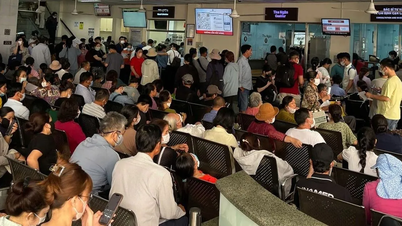








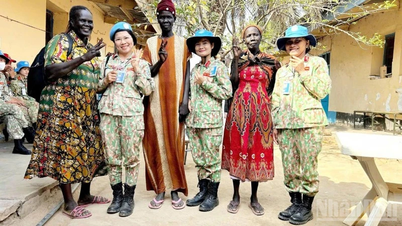



















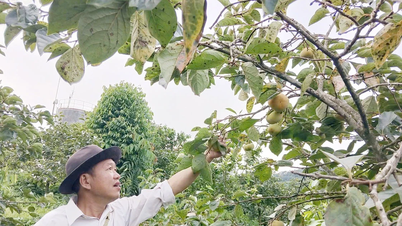
















































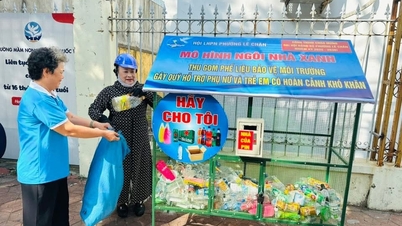




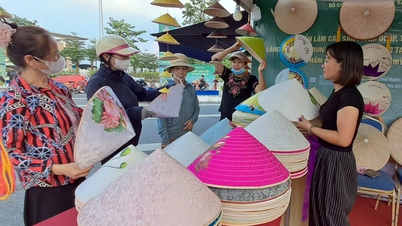
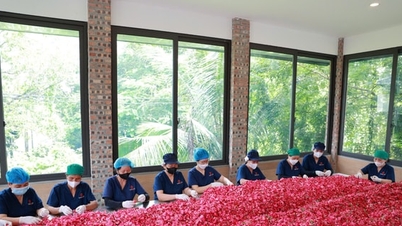









Comment (0)